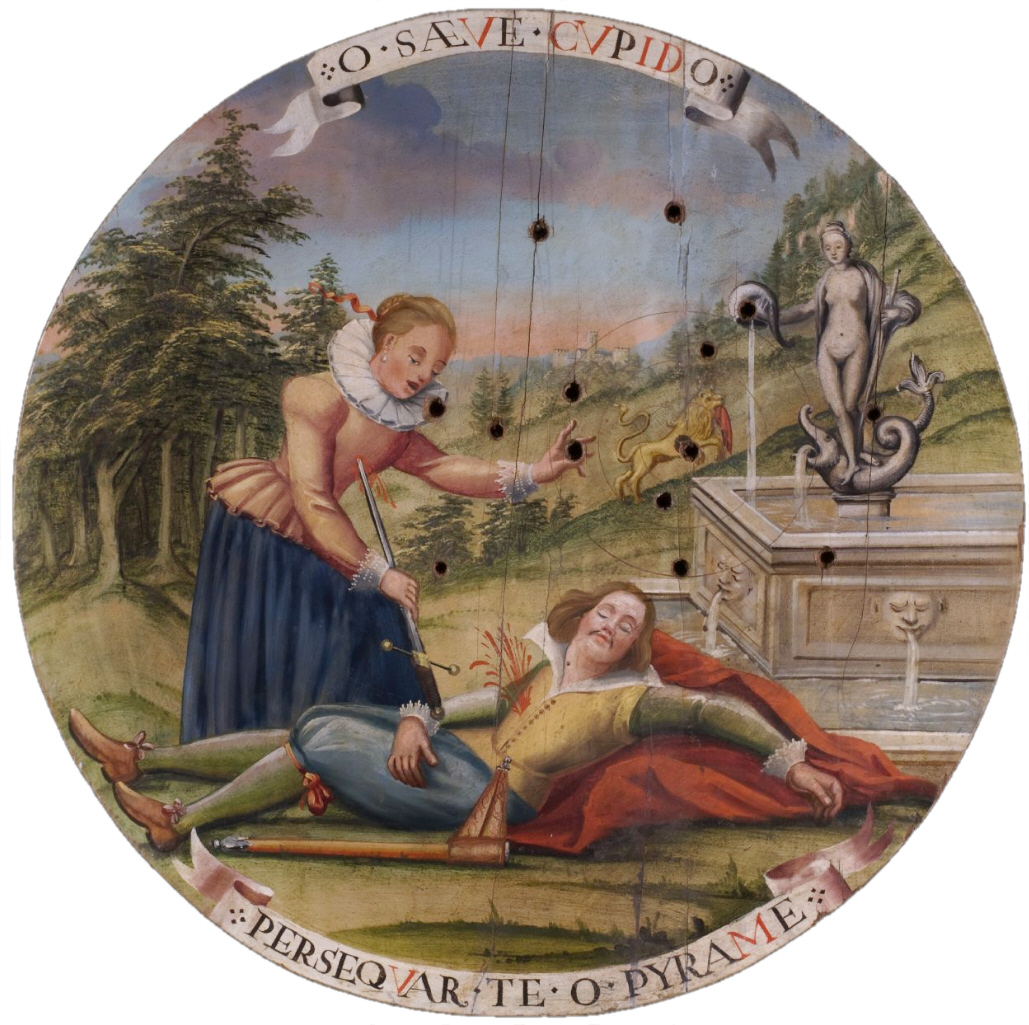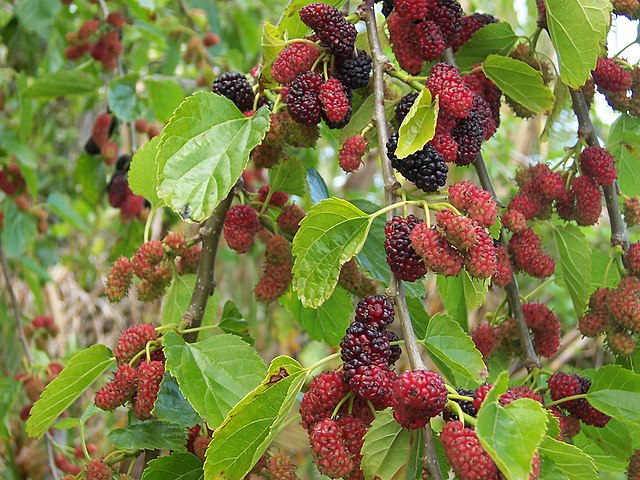6.9: Story- Pyramus and Thisbe
- Page ID
- 47179

Pyramus and Thisbe
Adapted from Old Greek Stories Told Anew by Josephine Preston Peabody, $\ccpd$

There once lived in Babylonia two lovers named Pyramus and Thisbe, who were separated by a strange misfortune. For they lived in connected houses, and although their parents had forbidden them to marry, these two had found a means of talking together through a crack in the wall.
Here, again and again, Pyramus on his side of the wall and Thisbe on hers, they would meet to tell each other all that had happened during the day, and to complain of their cruel parents. Eventually, they decided that they could endure it no longer and they would leave their homes and be married, no matter what. They planned to meet, on a certain evening, by a mulberry-tree near the tomb of King Ninus, outside the city gates. Once safely met, they were resolved to elope together.
So far all went well. At the appointed time, Thisbe, heavily veiled to disguise herself, managed to escape from home unnoticed, and after a secret journey through the streets of Babylon, she came to a garden of mulberry trees near the tomb of Ninus. The place was deserted, and once there, she took off the veil from her face to see if Pyramus waited anywhere among the shadows. She heard the sound of footsteps and turned to see—not Pyramus, but a creature unwelcome to any rendezvous—none other than a lioness crouching to drink from a pond nearby.
Without a cry, Thisbe fled, dropping her veil as she ran. She found a hiding place among the rocks at some distance, and there she waited, not knowing what else to do.
The lioness, having quenched her thirst after some violent meal, turned from the spring and, coming upon the veil, sniffed at it curiously, tore and tossed it with her bloody jaws,—as she would have done with Thisbe herself,—then dropped the plaything and walked away to the forest once more.
It was but a little after this that Pyramus came hurrying to the meeting place, breathless with enthusiasm to find Thisbe and tell her what had delayed him. He found no Thisbe there. For a moment he was puzzled. Then he looked about for some sign of her, some footprint by the pool. There was the trail of a wild beast in the grass, and nearby a woman’s veil, torn and stained with blood; he picked it up and knew it was Thisbe’s.
So she had come at the appointed hour, true to her word; she had waited there for him alone and defenseless, and she had been eaten by some beast from the jungle! As these thoughts rushed upon the young man’s mind, he could endure no more.
“Was it to meet me, Thisbe, that you came to such a death?” he cried. “And I followed all too late. But I will pay. Even now I come late, but I promise it wasn’t my fault!”
As he said this, the poor youth drew his sword and fell upon it, there at the foot of that mulberry tree which he had named as the rendezvous point, and his blood ran over the roots.
During these very moments, Thisbe, hearing no sound and a little reassured, had left from her hiding-place and came to the edge of the forest. She saw that the lioness had left the spring, and, eager to show her lover that she had dared all things to keep faith, she came slowly, little by little, back to the mulberry tree.
She found Pyramus there, according to his promise. His own sword was in his heart, the empty sheath by his side, and in his hand he still held her veil. Thisbe saw these things as if she were in a dream, and suddenly the truth awoke her. She saw the tragic misfortune of all, and when the dying Pyramus opened his eyes and fixed them upon her, her heart broke. With the same sword she stabbed herself, and the lovers died together.
There the parents found them, after an exhausting search, and they were buried together in the same tomb. But the berries of the mulberry tree turned red that day, and red they have remained ever since.
Comprehension and Critical Thinking Questions
Answer the following questions according to the reading.
- Why couldn’t Pyramus and Thisbe meet?
- Where did they decide to meet secretly?
- What did Thisbe wear and why?
- What did Thisbe see near the mulberry tree, and what did she do when she saw it?
- What did Pyramus find near the mulberry tree, and what did he think about it?
- What did Thisbe do when she found Pyramus?
- What natural phenomenon is this story trying to explain?
- This story inspired one of the most famous love stories ever, written by Shakespeare.
- Which story is it?
- How are the two stories similar?
CEFR Level: CEF Level B2




